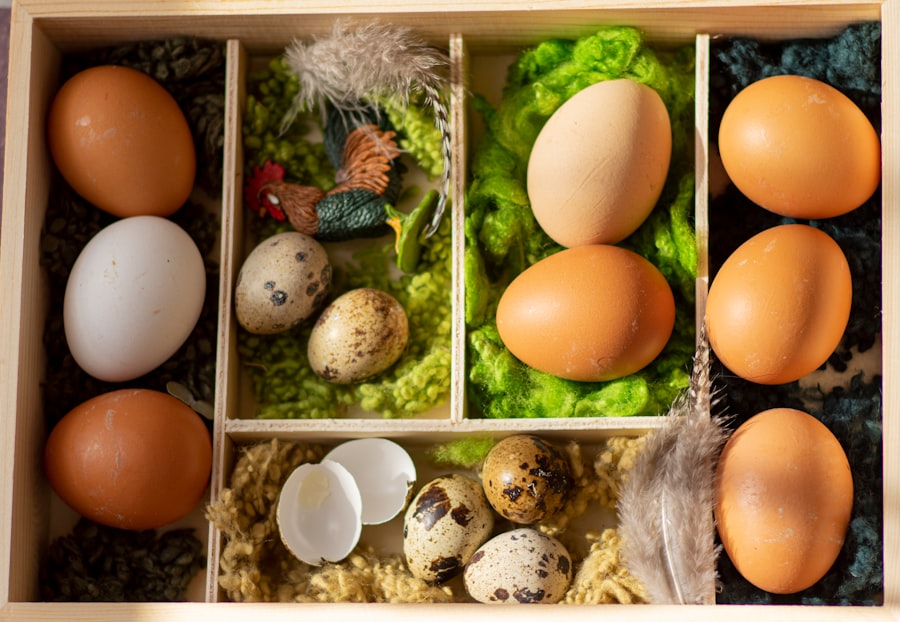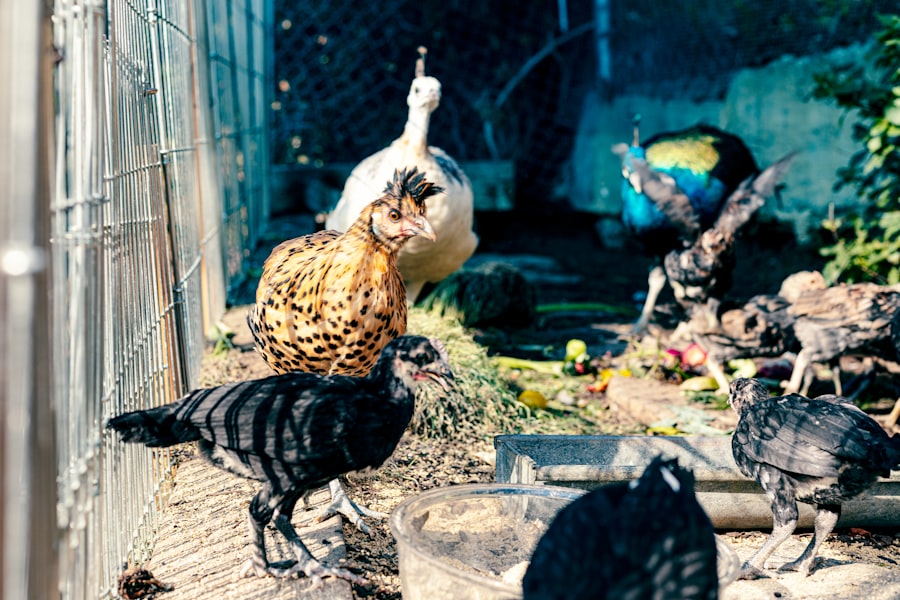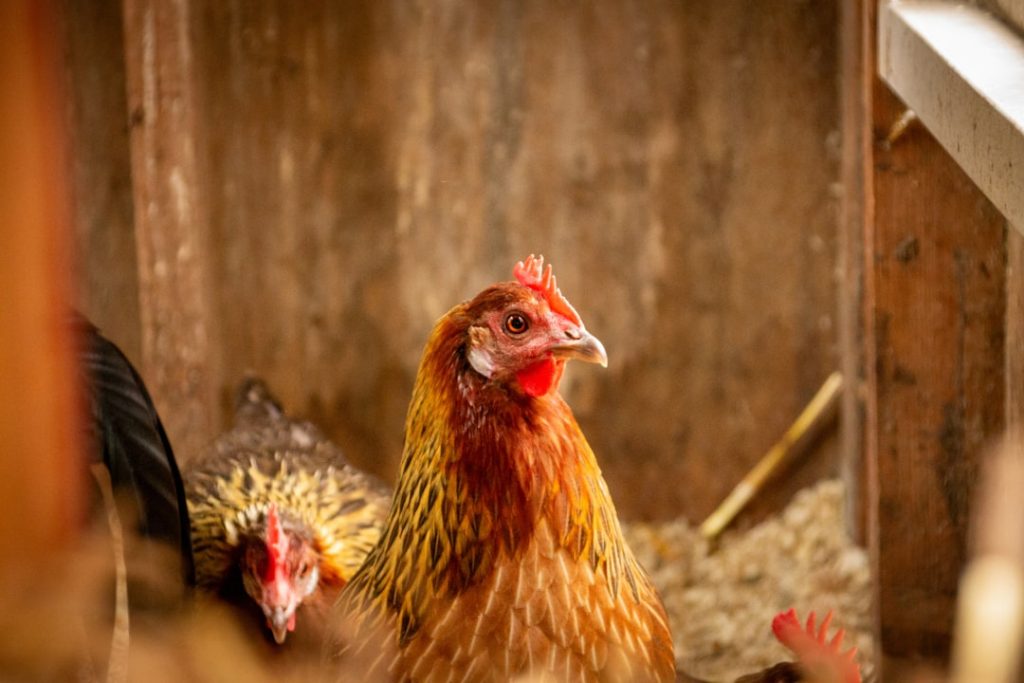Chicken tracking is a crucial aspect of managing a successful poultry operation. It involves maintaining detailed records of individual chickens’ health, egg production, and overall well-being. This practice enables farmers to make data-driven decisions to enhance flock productivity and welfare.
Effective tracking includes monitoring both individual birds and the flock as a whole, ensuring optimal health and performance. Key components of chicken tracking include:
1. Individual bird identification using methods such as leg bands, wing bands, or microchips
2.
Recording each chicken’s age, breed, weight, and health status
3. Monitoring egg production to assess flock health and productivity
4. Implementing daily care checklists to ensure all birds’ needs are met
By assigning unique identifiers to each bird, farmers can maintain accurate records of health, egg production, and specific care requirements.
This level of detail allows for targeted interventions and improvements in flock management. Understanding and implementing these fundamental tracking practices enables farmers to establish effective monitoring systems. These systems provide valuable insights into flock performance, allowing for informed decision-making and continuous improvement in poultry operations.
Table of Contents
- 1 Setting Up a Chicken Tracking System
- 2 Using Technology to Monitor Chickens
- 3 Implementing Daily Checklists for Chicken Care
- 4 Keeping Detailed Records of Chicken Health and Egg Production
- 5 Utilizing Identification Methods for Individual Chickens
- 6 Regularly Reviewing and Updating Chicken Tracking Practices
- 7 FAQs
- 7.1 What are some ways to keep track of chickens?
- 7.2 Why is it important to keep track of chickens?
- 7.3 How can leg bands help in keeping track of chickens?
- 7.4 What are wing bands and how do they help in keeping track of chickens?
- 7.5 What are numbered tags and how are they used to keep track of chickens?
- 7.6 How do electronic tracking devices help in keeping track of chickens?
Key Takeaways
- Chicken tracking involves monitoring the health, behavior, and egg production of individual chickens.
- Setting up a chicken tracking system requires identifying and labeling each chicken, as well as creating a system for recording and analyzing data.
- Technology, such as GPS trackers and sensors, can be used to monitor the movements and activities of chickens.
- Daily checklists for chicken care should include tasks such as feeding, watering, and checking for signs of illness or injury.
- Keeping detailed records of chicken health and egg production is essential for identifying patterns and making informed decisions about chicken management.
Setting Up a Chicken Tracking System
Creating a Database of Your Flock
To start, farmers can create a database of their flock, including details such as breed, age, weight, and any health issues. This can be done using physical records like notebooks or spreadsheets, as well as digital tools like apps or software designed for poultry management.
Implementing Individual Bird Identification
Implementing individual bird identification methods, such as leg bands or microchips, is also essential in uniquely identifying each chicken in the flock. This allows farmers to have accurate and up-to-date information about their flock’s health and productivity.
Monitoring Flock Health and Productivity
In addition to tracking individual birds, farmers should establish a method for monitoring the overall health and productivity of the flock. This involves keeping records of egg production, feed consumption, and any health issues that may arise within the flock. By doing so, farmers can identify trends and patterns within their flock that may indicate areas for improvement, enabling them to make informed decisions to optimize their flock’s productivity and welfare.
Overall, setting up a chicken tracking system involves creating a method for monitoring both individual birds and the flock as a whole to ensure that they are healthy and thriving.
Using Technology to Monitor Chickens

Advancements in technology have made it easier than ever for farmers to monitor their chickens effectively. There are now a variety of tools and resources available that can help farmers track their flock’s health, egg production, and overall well-being. For example, there are apps and software designed specifically for poultry management that allow farmers to keep detailed records of each chicken’s health and productivity.
These tools can help farmers track individual birds, monitor egg production, and identify any health issues within the flock. Additionally, there are also advanced monitoring systems available that can track environmental conditions within the chicken coop, such as temperature and humidity, to ensure that the birds are comfortable and healthy. In addition to digital tools, there are also physical technologies available that can help farmers monitor their chickens more effectively.
For example, there are automated feeding and watering systems that can help ensure that the flock has access to food and water at all times. There are also advanced monitoring devices that can track individual bird activity and behavior to identify any potential health issues or changes in productivity. By utilizing technology to monitor chickens, farmers can streamline their tracking processes and make informed decisions to improve their flock’s overall welfare and productivity.
Implementing Daily Checklists for Chicken Care
Implementing daily checklists for chicken care is an essential part of ensuring that each bird’s needs are being met. These checklists can include tasks such as checking for signs of illness or injury, ensuring that the coop is clean and well-ventilated, and monitoring food and water consumption. By implementing daily checklists, farmers can ensure that they are providing the best possible care for their flock on a consistent basis.
This can help them identify any potential issues early on and take proactive measures to address them before they become more serious. In addition to physical care tasks, daily checklists for chicken care should also include monitoring egg production and overall flock behavior. By keeping track of egg production on a daily basis, farmers can identify any changes in productivity and take steps to address them.
Additionally, monitoring flock behavior can help farmers identify any potential health issues or changes in the birds’ well-being. By implementing daily checklists for chicken care, farmers can ensure that they are providing comprehensive care for their flock on a consistent basis.
Keeping Detailed Records of Chicken Health and Egg Production
Keeping detailed records of chicken health and egg production is crucial for understanding the overall well-being and productivity of the flock. This can include recording details such as each bird’s weight, any health issues they may have, and any treatments or medications they have received. Additionally, keeping detailed records of egg production is essential for understanding the overall productivity of the flock.
By keeping accurate records of egg production on a daily basis, farmers can identify any changes in productivity and take proactive measures to address them. In addition to physical records, there are also digital tools available that can help farmers keep detailed records of chicken health and egg production. For example, there are apps and software designed specifically for poultry management that allow farmers to input and track this information easily.
These tools can help farmers keep accurate and up-to-date records of their flock’s health and productivity. By keeping detailed records of chicken health and egg production, farmers can make informed decisions to improve their flock’s overall welfare and productivity.
Utilizing Identification Methods for Individual Chickens

Accurate Record Keeping
Utilizing identification methods for individual chickens is essential for effective tracking and monitoring of the flock. This can include using methods such as leg bands, wing bands, or microchips to uniquely identify each bird in the flock. By assigning a unique identifier to each chicken, farmers can keep accurate records of their health, egg production, and any specific care needs they may have.
Tracking Key Characteristics
Additionally, utilizing identification methods for individual chickens can help farmers track each bird’s age, breed, weight, and any health issues they may have. In addition to physical identification methods, there are also digital tools available that can help farmers track individual birds more effectively. For example, there are apps and software designed specifically for poultry management that allow farmers to input and track individual bird information easily.
Informed Decision Making
These tools can help farmers keep accurate records of each chicken’s health and productivity. By utilizing identification methods for individual chickens, farmers can ensure that they have comprehensive information about each bird in the flock to make informed decisions to improve their overall welfare and productivity.
Regularly Reviewing and Updating Chicken Tracking Practices
Regularly reviewing and updating chicken tracking practices is essential for ensuring that the system remains effective over time. As the flock grows and changes, it is important for farmers to review their tracking practices regularly to ensure that they are still meeting the needs of the flock. This can involve evaluating the effectiveness of current tracking methods and identifying any areas for improvement.
Additionally, as new technologies and resources become available, it is important for farmers to update their tracking practices to take advantage of these advancements. In addition to reviewing tracking practices regularly, it is also important for farmers to update their tracking methods as needed. This can involve implementing new technologies or resources that can help streamline the tracking process or provide more comprehensive information about the flock’s health and productivity.
By regularly reviewing and updating chicken tracking practices, farmers can ensure that they are providing the best possible care for their flock on an ongoing basis. In conclusion, understanding the basics of chicken tracking is essential for effective poultry management. By setting up a comprehensive tracking system, utilizing technology to monitor chickens, implementing daily checklists for chicken care, keeping detailed records of chicken health and egg production, utilizing identification methods for individual chickens, and regularly reviewing and updating tracking practices, farmers can ensure that they are providing the best possible care for their flock on an ongoing basis.
Effective chicken tracking allows farmers to make informed decisions to improve their flock’s overall welfare and productivity.
If you’re looking for tips on how to keep track of your chickens, you might also be interested in learning about different types of chicken coops. Check out this article on turning a shed into a chicken coop for some creative ideas on how to provide a comfortable and safe living space for your feathered friends.
FAQs
What are some ways to keep track of chickens?
Some ways to keep track of chickens include using leg bands, wing bands, numbered tags, or electronic tracking devices.
Why is it important to keep track of chickens?
Keeping track of chickens is important for monitoring their health, identifying individual birds, and managing breeding programs.
How can leg bands help in keeping track of chickens?
Leg bands are small, colored bands that are placed around a chicken’s leg. They can be used to identify individual birds and keep track of their age, breed, or other important information.
What are wing bands and how do they help in keeping track of chickens?
Wing bands are similar to leg bands but are placed on a chicken’s wing instead of its leg. They can also be used to identify and keep track of individual birds.
Numbered tags are small, plastic tags with unique numbers that are attached to a chicken’s leg or wing. They can be used to identify and keep track of individual birds.
How do electronic tracking devices help in keeping track of chickens?
Electronic tracking devices, such as RFID tags or GPS trackers, can be used to monitor the movement and location of chickens. They provide real-time data and can be useful for large-scale poultry operations.
Meet Walter, the feathered-friend fanatic of Florida! Nestled in the sunshine state, Walter struts through life with his feathered companions, clucking his way to happiness. With a coop that’s fancier than a five-star hotel, he’s the Don Juan of the chicken world. When he’s not teaching his hens to do the cha-cha, you’ll find him in a heated debate with his prized rooster, Sir Clucks-a-Lot. Walter’s poultry passion is no yolk; he’s the sunny-side-up guy you never knew you needed in your flock of friends!







